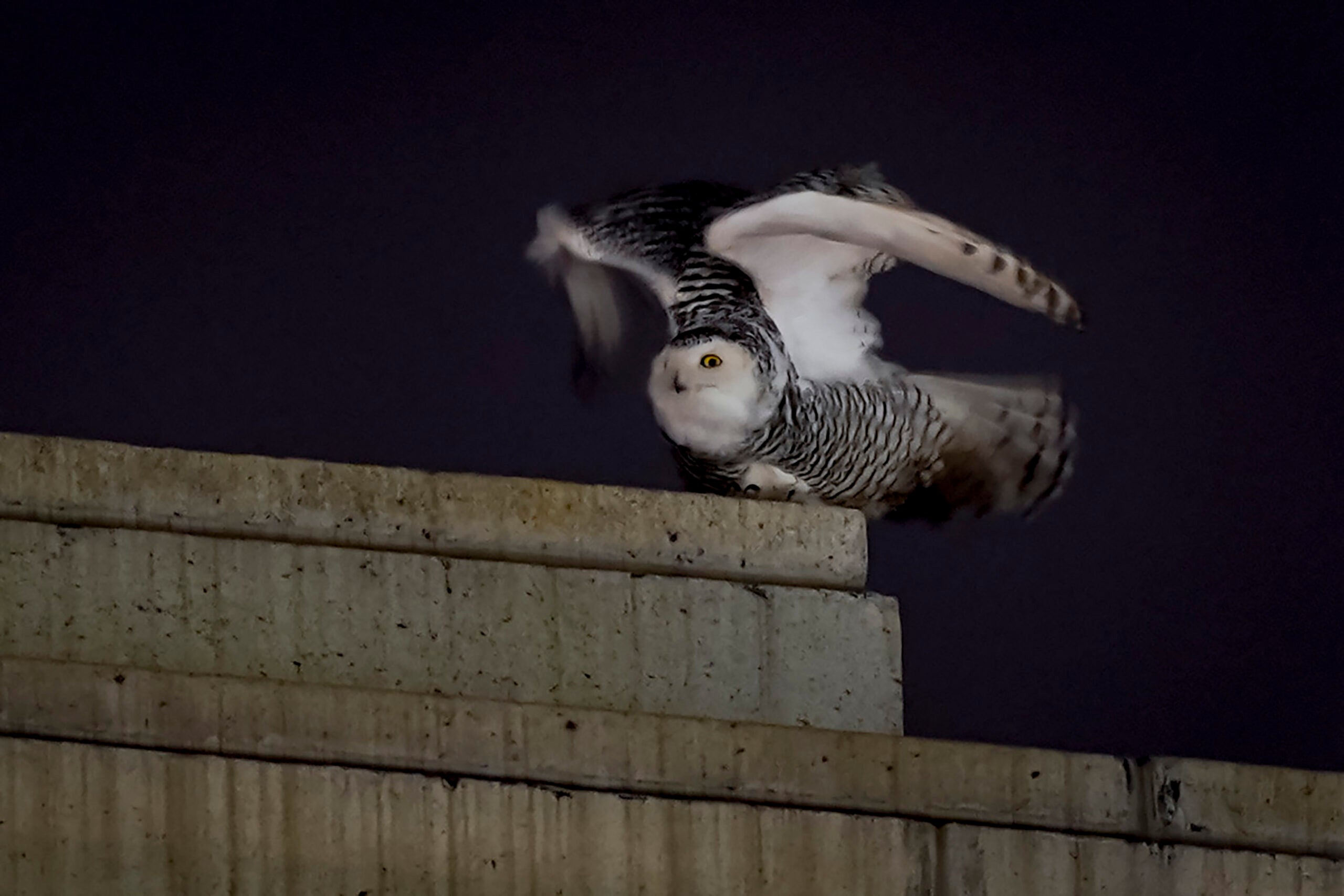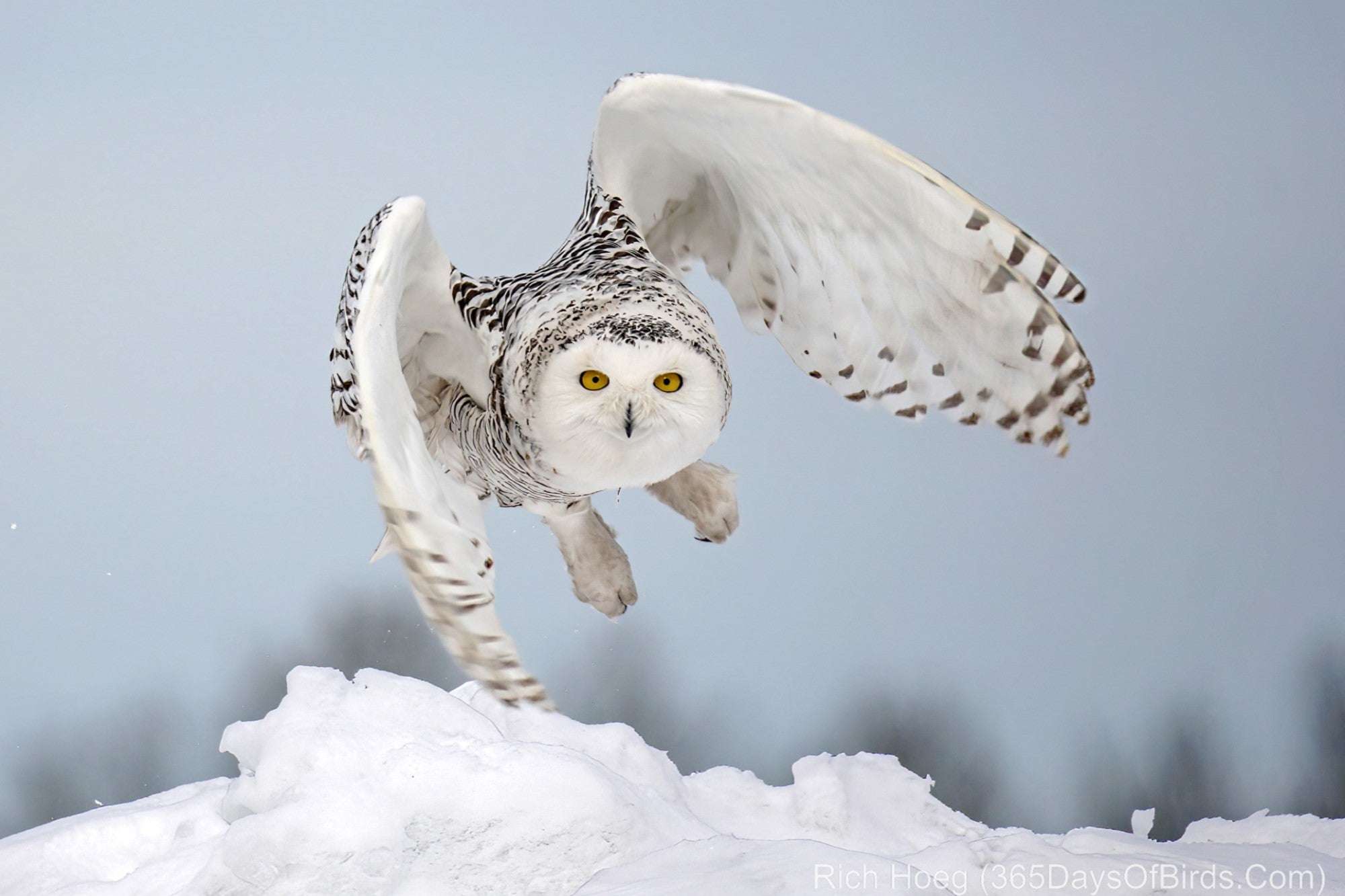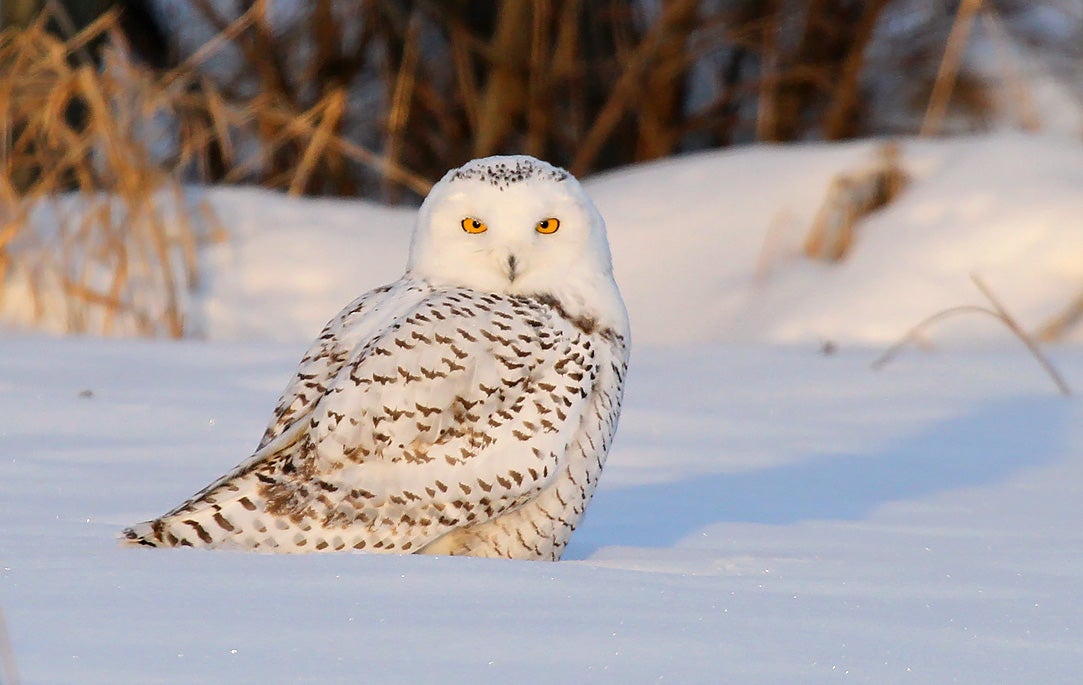Just as many Wisconsinites head south for winter, Wisconsin is usually a popular winter home for snowy owls.
Some winters, there are hundreds of sightings of the Arctic birds, according to Ryan Brady, a research scientist with the state Department of Natural Resource. But as of mid-February this year, Brady said only about 30 or so sightings have been reported.
The reason for the decline has to do with an Arctic rodent called the lemming.
News with a little more humanity
WPR’s “Wisconsin Today” newsletter keeps you connected to the state you love without feeling overwhelmed. No paywall. No agenda. No corporate filter.
“Think of it like a supersized mouse or vole found in the Canadian Arctic, where the snowy owl nests,” he said.
Their nesting success will depend on the number of lemmings, whose numbers also vary from year to year. The more lemmings there are to feed on, the more owls will produce babies who leave the nest and fly south.
“And that leads to what we call eruption years here in Wisconsin,” Brady said. “When the lemming numbers are low, the owls don’t raise very many babies. Some won’t even nest at all because there isn’t a good food source to feed them. And that means there’s far fewer owls on the landscape to move south during the wintertime.”
During a recent appearance on Wisconsin Public Radio’s “The Morning Show,” Brady explained what the lower numbers of snowy owls mean for the future and where you might spot a snowy owl this year.
The following has been edited for clarity and brevity.
Kate Archer Kent: Are snowy owls prone to these eruption tendencies?
Ryan Brady: Yes, we see eruptions periodically. It’s not a hard and fast rule, but somewhere around every four years…. And that’s related to the periodicity of the lemming numbers. The lemmings build in numbers over a few years and then ultimately crash in population and the owl populations follow suit.
KAK: Are lemming populations being affected by climate change?
RB: As you can imagine, where these birds spend their summers are remote areas, very difficult to access. There’s not a lot of research going on. So there hasn’t been a great deal of work to pinpoint the extent of the impacts on lemming populations, particularly here in North America. And so we think that these lemming cycles may be disrupted by climate change, but we don’t know that at this point.
KAK: Can you just stop for a moment and just expand on the enormous geographic territory these snowy owls cover?
RB: It’s a species that’s distributed globally and across the Arctic during the summer and then moves south during the winter, and they can cover thousands of miles. They’re very nomadic. During the summer, they might be homebodies, if you will, if they’ve found a good stash of lemmings somewhere. But if there isn’t a good food source, they’re really moving around, and they can cover thousands of miles in the course of one year, and not just north to south, but also east to west. Some birds that have spent time here in Wisconsin may end up even over in Russia, crossing over the Bering Sea.
KAK: Where is the best place to look for a snowy owl?
RB: In general, their habitat is open country. So you want to go to open habitats like grassland, wetland complexes. Airports actually mimic the tundra in a way because they’re treeless and wide open. So they do tend to attract snowies, which can be an issue, but those are the types of habitats you want to visit. Head on out at any time of day really, but your best chances are at dawn and dusk to find them.
Now, specifically this year, we don’t have many owls around. There’s only a few hotspots and there’s a few birds around the airport in Superior, in the northwest corner. Crex Meadow State Wildlife Area, which is a great destination for just about anything, has a few snowy owls this year. And then there’s a good swath of owls kind of running in the southeast quarter of the state from Green Bay down through the Freedom area, Green Lake County, into the northern part of Dane County.
If you go to eBird.org, you can find a map that will show recent sightings and you might be able to go find one yourself.
Wisconsin Public Radio, © Copyright 2026, Board of Regents of the University of Wisconsin System and Wisconsin Educational Communications Board.


